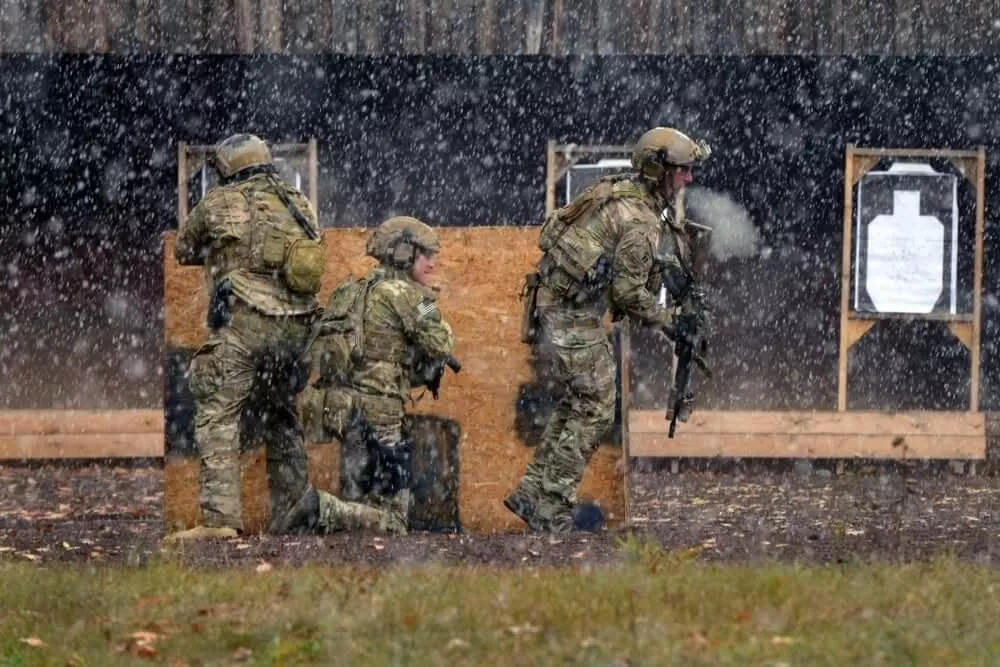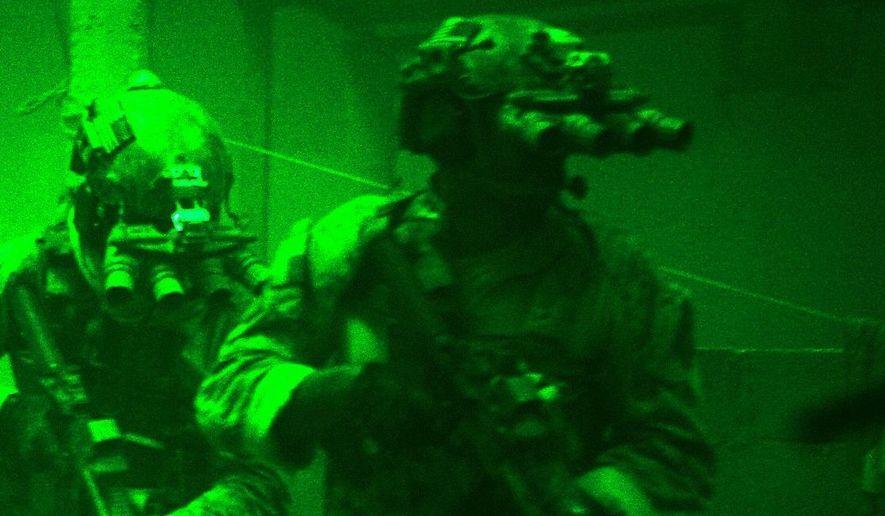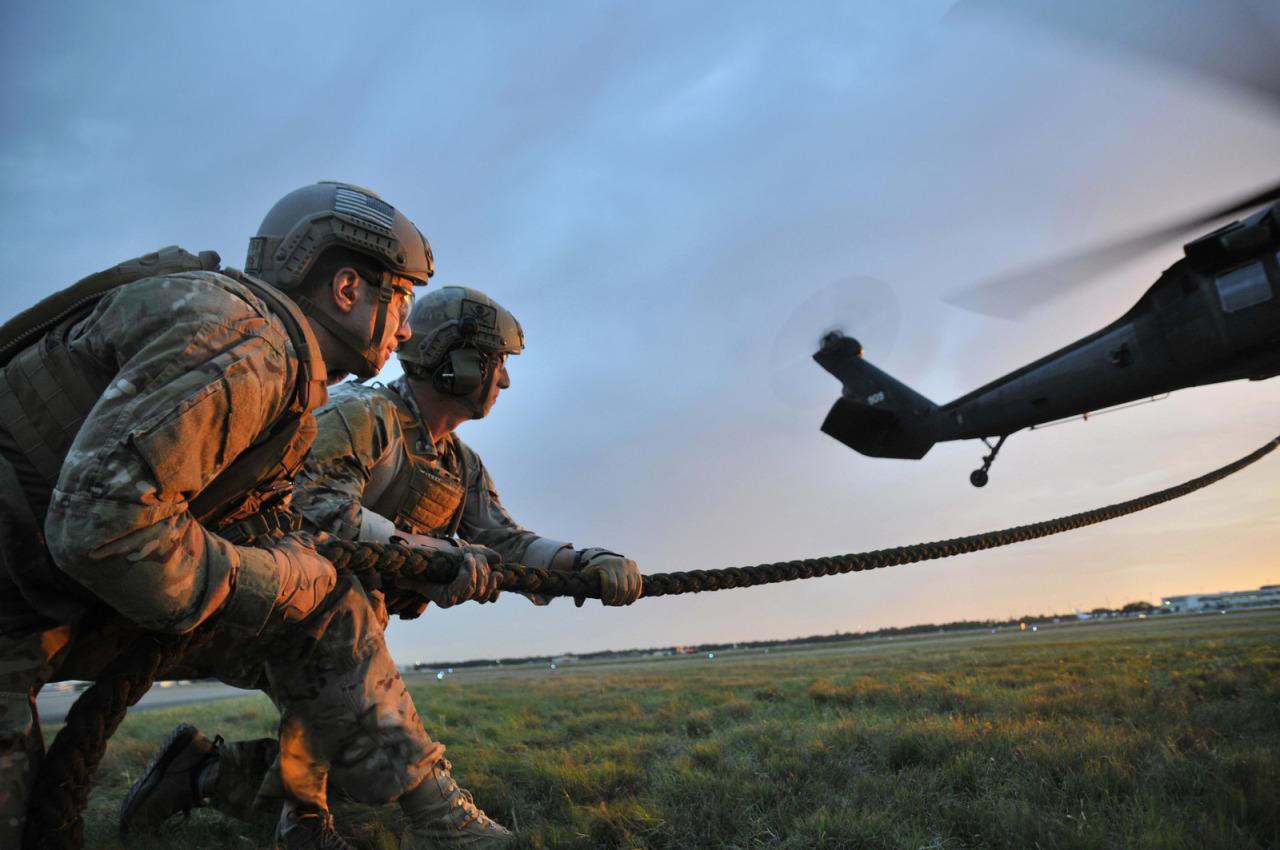The difference between U.S. Army Special Forces (SF) vs Navy SEALs selection and training should be observed primarily in the duration of selection and training, as well as the number of topics covered during the training.
For example, U.S. Army Special Forces (SF) training takes longer than a Navy SEAL training program because they have a quite different modus operandi, different responsibilities, and far more topics to cover. On the other side, Navy SEAL selection and training are considered as one of the toughest in the world with a very high washout rate.
The Army SF (Green Berets) are designed to deploy and execute nine doctrinal missions: unconventional warfare, foreign internal defense, direct action, counter-insurgency, special reconnaissance, counter-terrorism, information operations, counterproliferation of weapons of mass destruction, and security force assistance.
On the other side, Navy SEALs are the U.S. Navy’s primary special operations force tasked with small-unit special operation missions in maritime, jungle, urban, arctic, mountainous, and desert environments. SEALs are typically ordered to capture or to eliminate high-level targets (HVT), or to gather intelligence behind enemy lines.
U.S. Army Special Forces (SF): Selection and training
U.S. Army Special Forces (SF) training is “so much longer” than Navy SEAL training because even after a soldier has completed basic combat training/advanced individual training (BCT/AIT) or One Station Unit Training (OSUT), which combines BCT and AIT into one contiguous course vice two separate courses, and Army Airborne School, for a total of approximately 19 weeks of training, a soldier must complete from a minimum of 64 weeks to a maximum 107 weeks (depending upon specialty) of SF training to become SF qualified.
This includes Special Forces Preparation and Conditioning (SFPC) and Special Forces Assessment and Selection (SFAS) as well as all phases of the Special Forces Qualification Course (SF “Q” Course).

Total training time from beginning BCT or OSUT can be for as long as 126 weeks (over 29 months, again, depending upon specialty) of total training to earn the Special Forces “Long Tab.” The reasons for the very long training time are two-fold: first, all SF soldiers are fluent in at least one language other than English, and second, all SF soldiers are qualified in a specific SF military occupational specialty (MOS) at the “expert-level” in their specialty.
Enlisted SF members (a.k.a. Green Berets) qualify as either weapon (18B), engineer (18C), medical (18D), or communications (18E) sergeant, and are all qualified to recruit, organize, train and advise or command, indigenous combat forces up to company size. Soldiers do not need to “wait five years” to apply for entry into SF (no one “enlists” directly into the “Green Berets”). However, enlisted soldiers must be at least a PFC (E-3) or enlist with an “18X Program” contract to be a candidate for the SF Initial Accession (IA) program. These potential SF candidates must still complete OSUT, Army Airborne School, and SFPC before eligibility for SFAS. Entry into SF is by no means guaranteed.
While the missions and training of Army SF and Navy SEALs (as well as Marine Raiders), do have some similarities and overlap, each one (as well as Air Force Special Tactics) provide unique skills and capabilities that complement each other and provide unparalleled special operations capability to the United States.

There is the primary mission of U.S. Army Special Forces. They are not “shock” troops, like Navy SEALs. Their primary mission is to interact with foreign allies, training them and when necessary, lead them in combat. Often they do this behind enemy lines, without regular contact and supply from command. So, they have to be EXPERT in their specialty as there won’t be another person to handle it or resupply if something gets broke. And quite often their equipment will be whatever the locals can supply.
A U.S. Army Special Forces soldier is among the best-trained soldier that the US produces, bar none!
The reason they wanted experienced soldiers is again a reflection of their primary mission. They need more mature people who are aware of what is involved. And have a commitment to the Army. My understanding now is that you can qualify for SF Q school right out of AIT if you pass some additional tests.
All Navy SEALs must attend and graduate from their rating’s 24-week “A” School known as Basic Underwater Demolition/SEAL (BUD/S) school, a basic parachutist course, and then the 26-week SEAL Qualification Training program.

BUD/S is 6 months long (plus time waiting to class up, etc). That entire time, the instructors (who have already passed BUD/S years ago) are trying to make as many people DOR (quit) as they can. (Note: it’s not that they dislike everyone and not that they WANT people to quit, but if they try everything they can do to get someone to quit and that person does not give in and quit… then that is someone we would feel comfortable not quitting during the toughest most intense situations. It’s a way to get the best of the best mentally hardened guys into the Teams).
So for the entire 6 months, you are pretty much constantly wet and sandy, you are constantly getting banged up, earning new bumps and bruises daily, everything on your body hurts and is sore. You have instructors encouraging you to just DOR and entice you with comfort rewards to do so (e.g., during Hell Week candidates are told that they all had to do was give up and to be released free from surf torture.

The entire 6 months, you must be dedicated to NOTHING else, but graduating from one of the most difficult military schools in the world. Virtually 100% of those who start BUD/S swear up and down, “there is nothing they can do to make me quit. I will never, ever quit…” But the numbers of graduates state otherwise. These guys that “wanted to be SEALs since they were 5 years old…” just quit. It’s easy to say you will never quit, but it’s another thing to prove it.
Add to all of this, the physical demands you are expected to meet and you have (arguably) the most difficult training program in the United States.

So what I am understanding is that Navy Seals are not only mentally tougher but that they also learn certain skill sets at a much faster rate the SF guys? Both are badasses in my opinion.
No that is not what is being said Navy Guy. The SEALs are not tougher than SF and they don’t learn quicker. SF operators have more to learn than SEALs
Navy guy, SEALs have better PR. I served in the Navy five years and they really stand out. BOTH units are hardcore